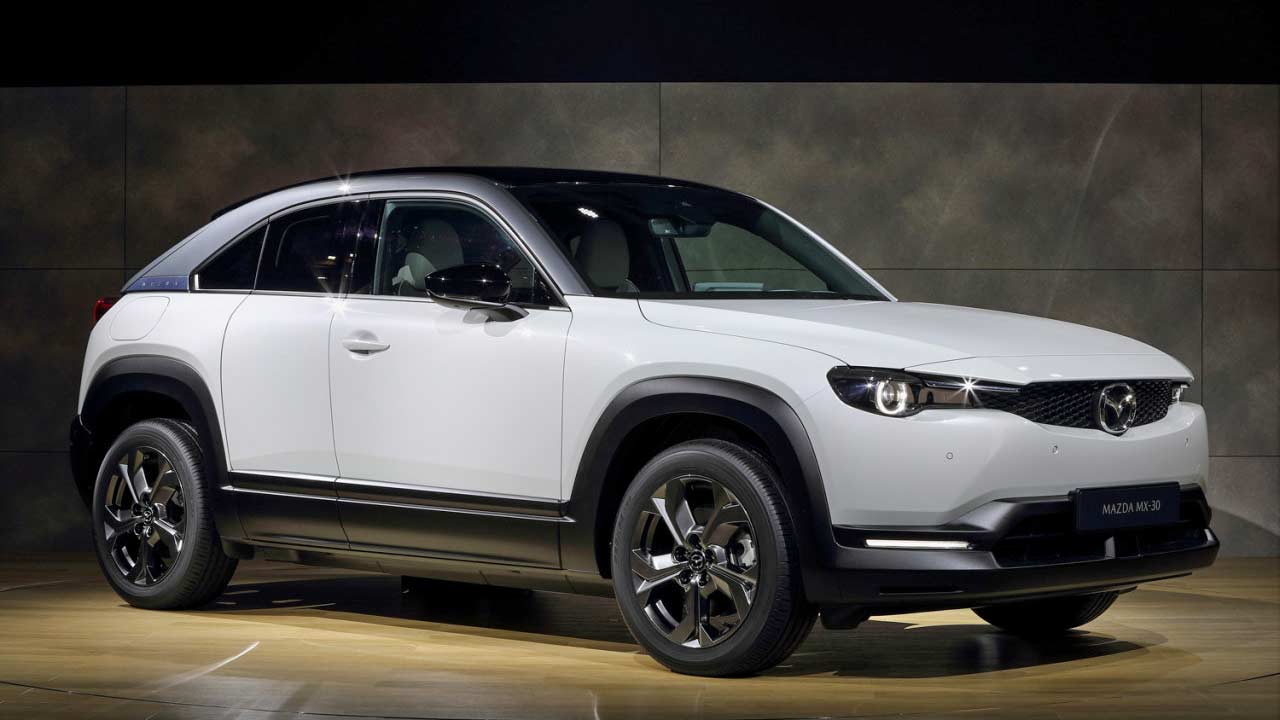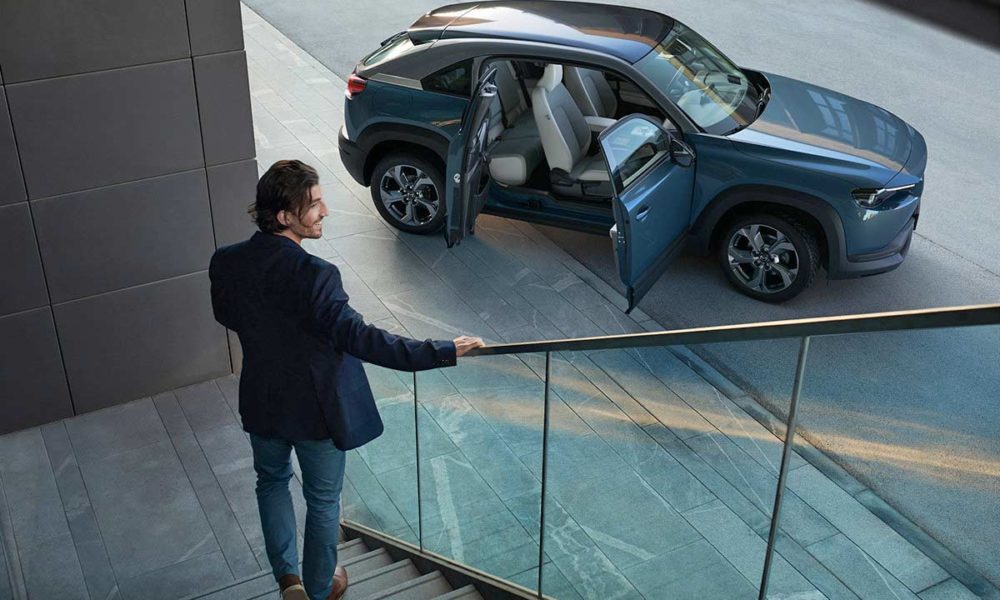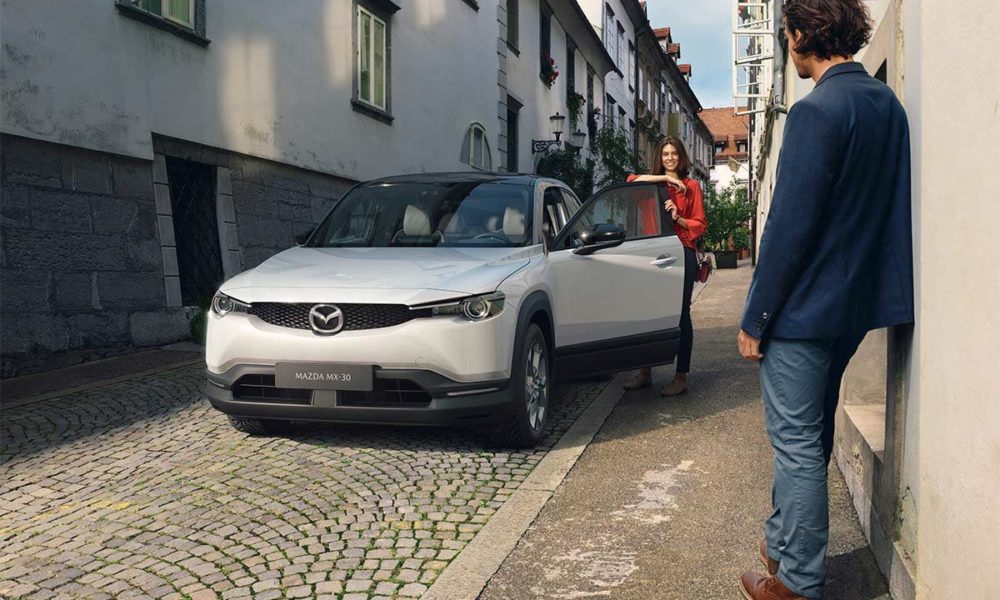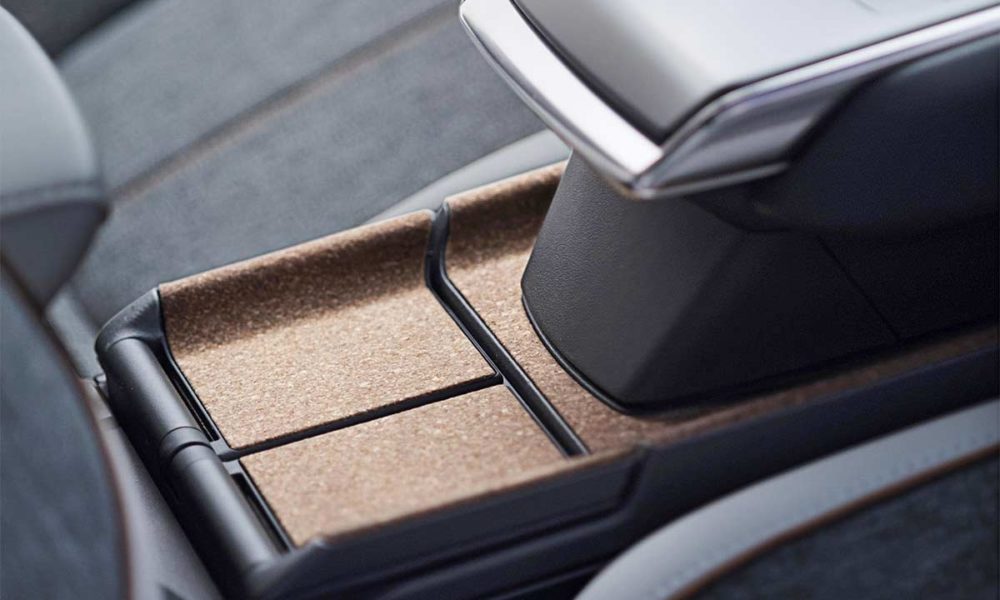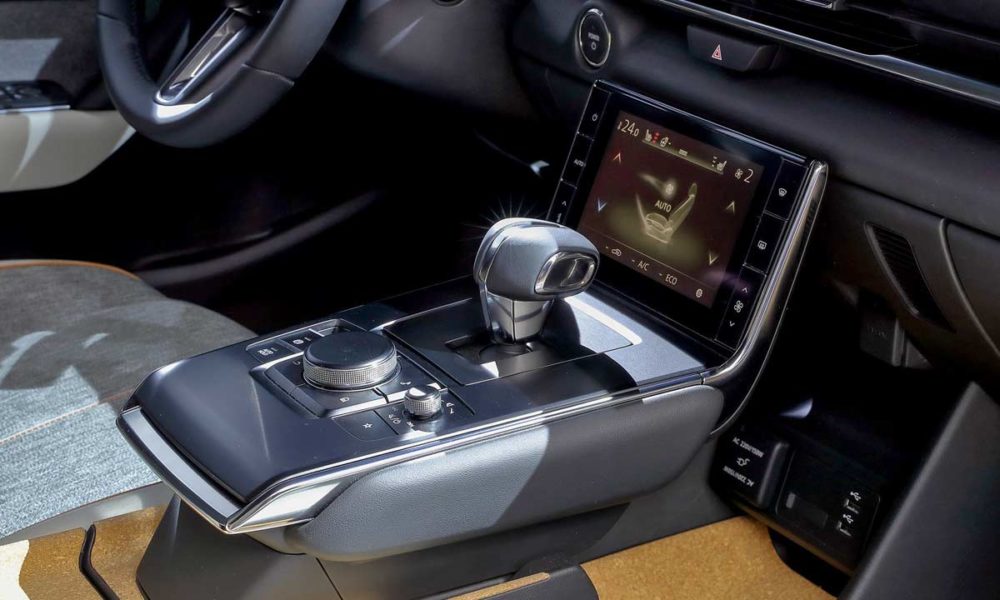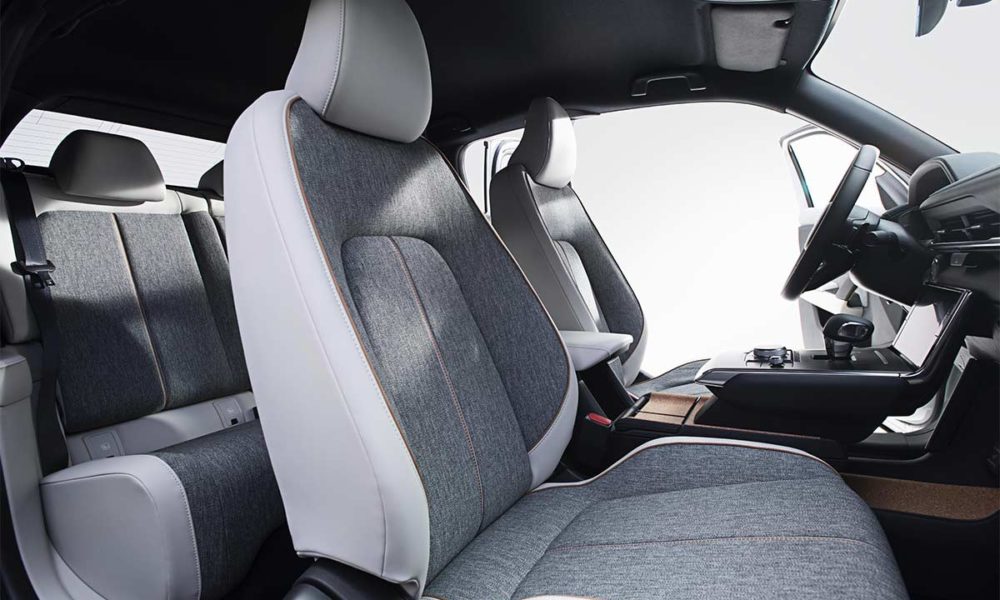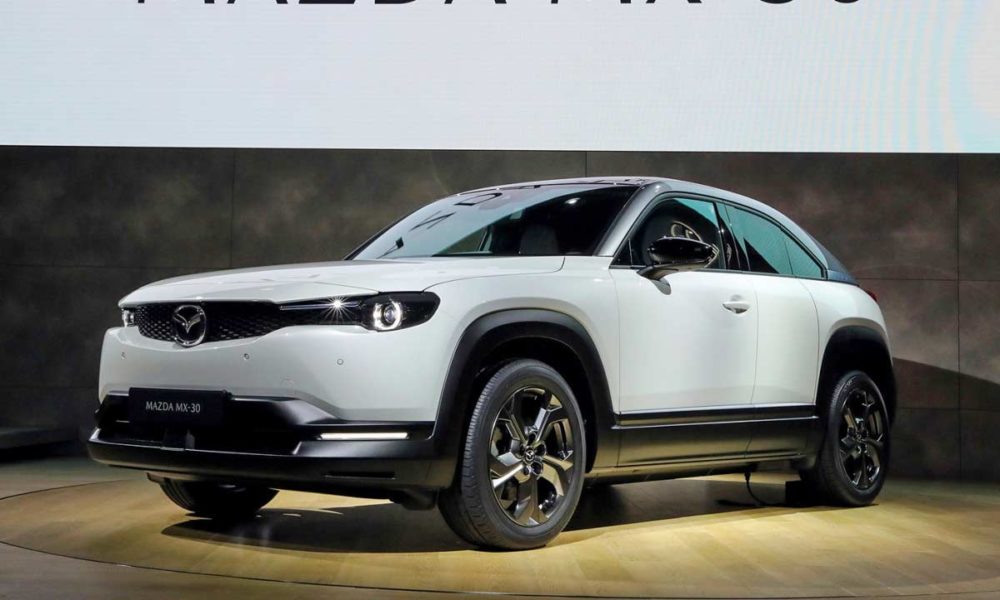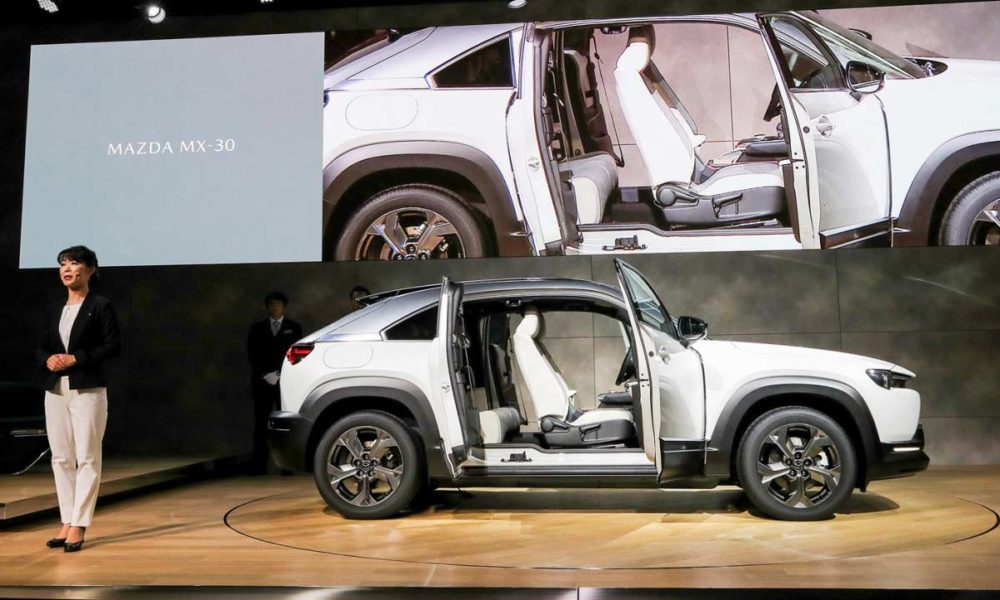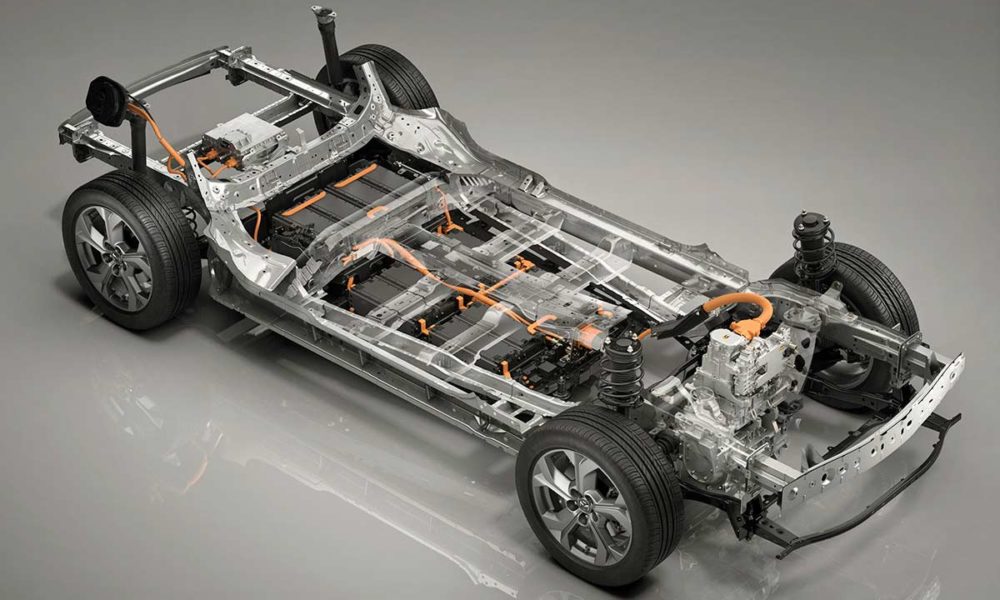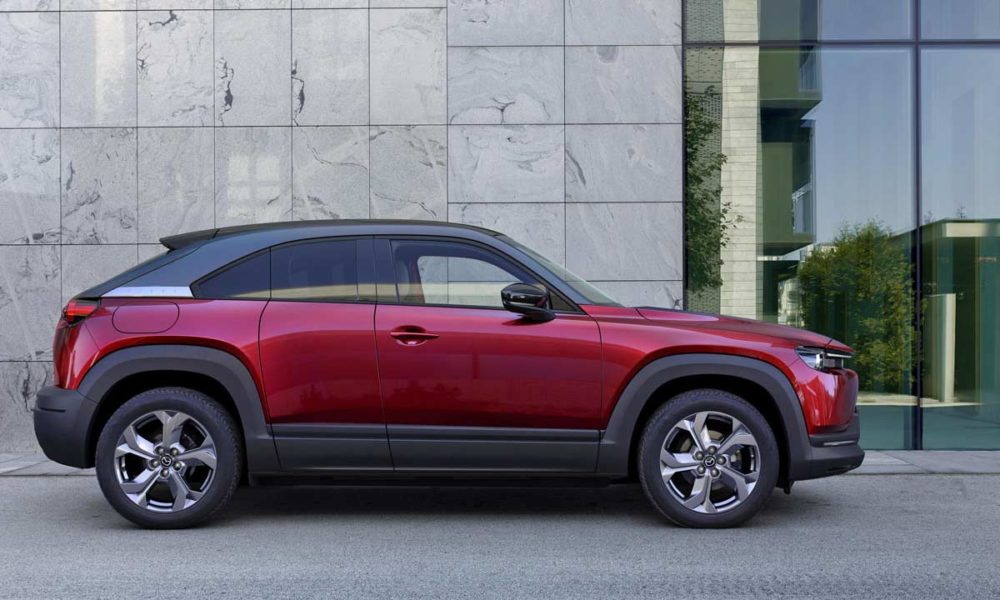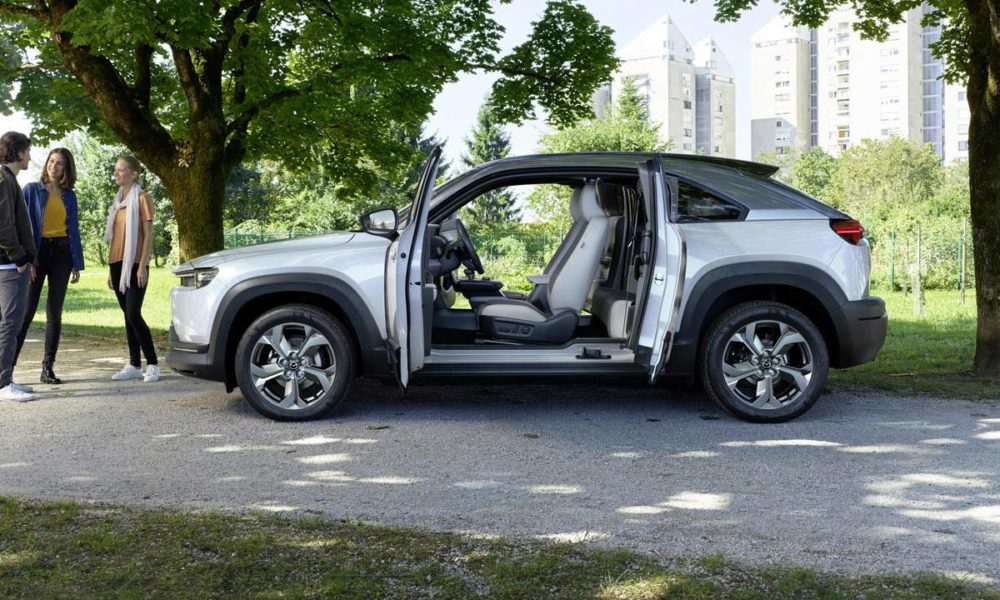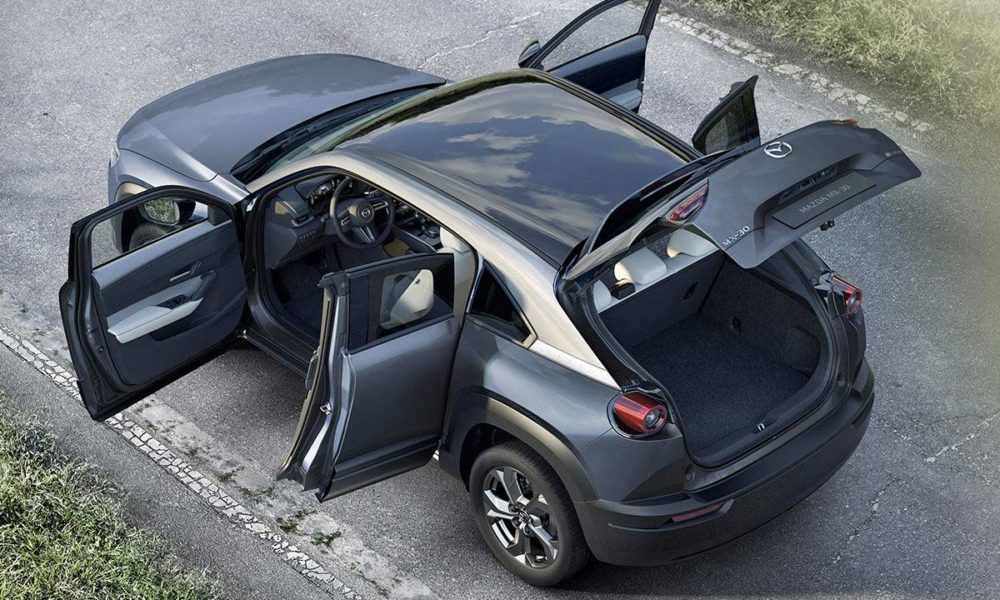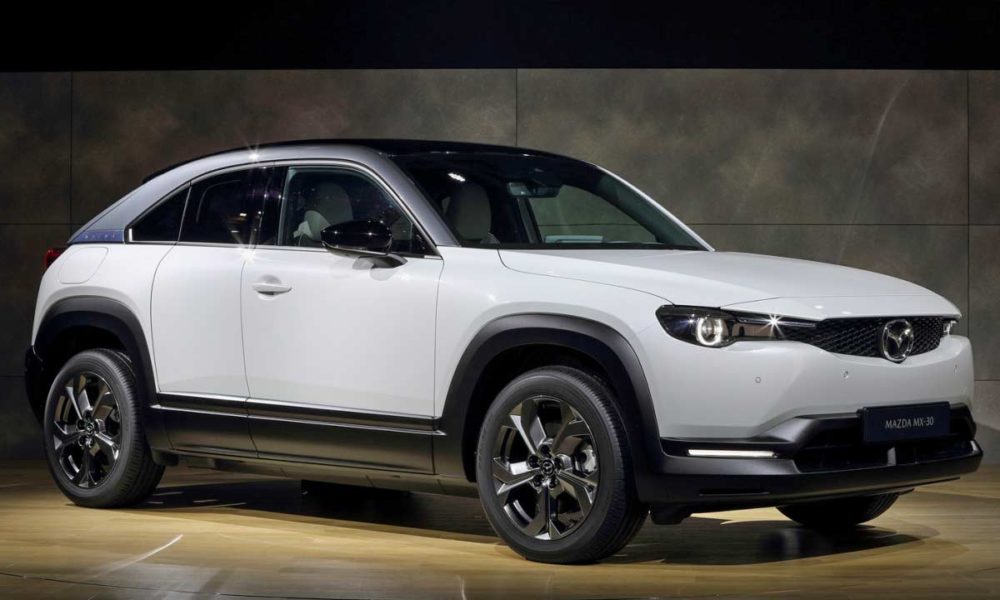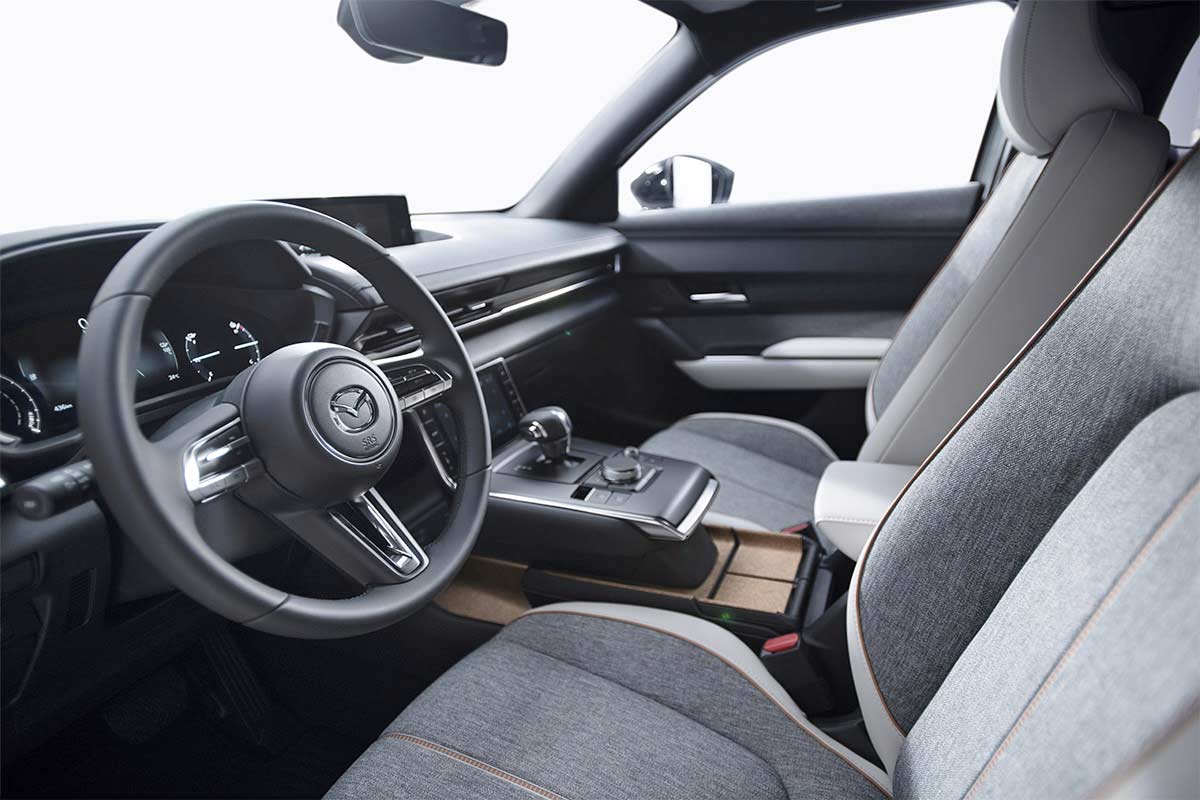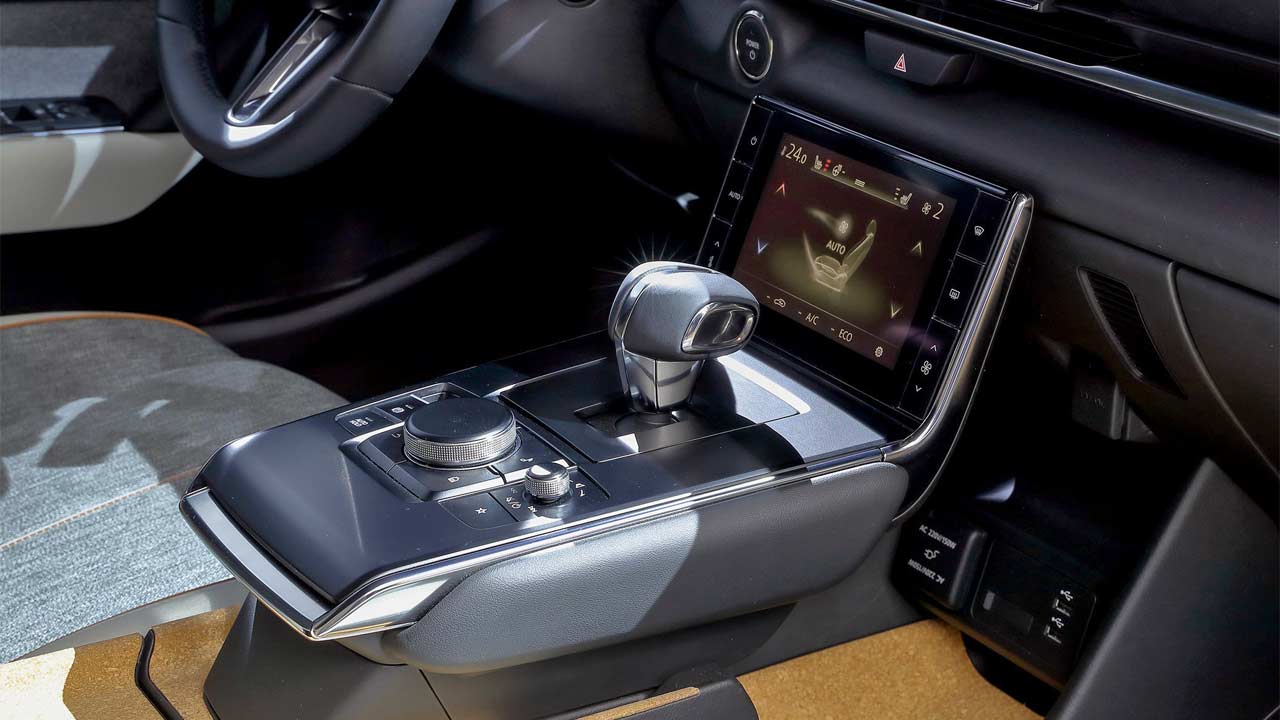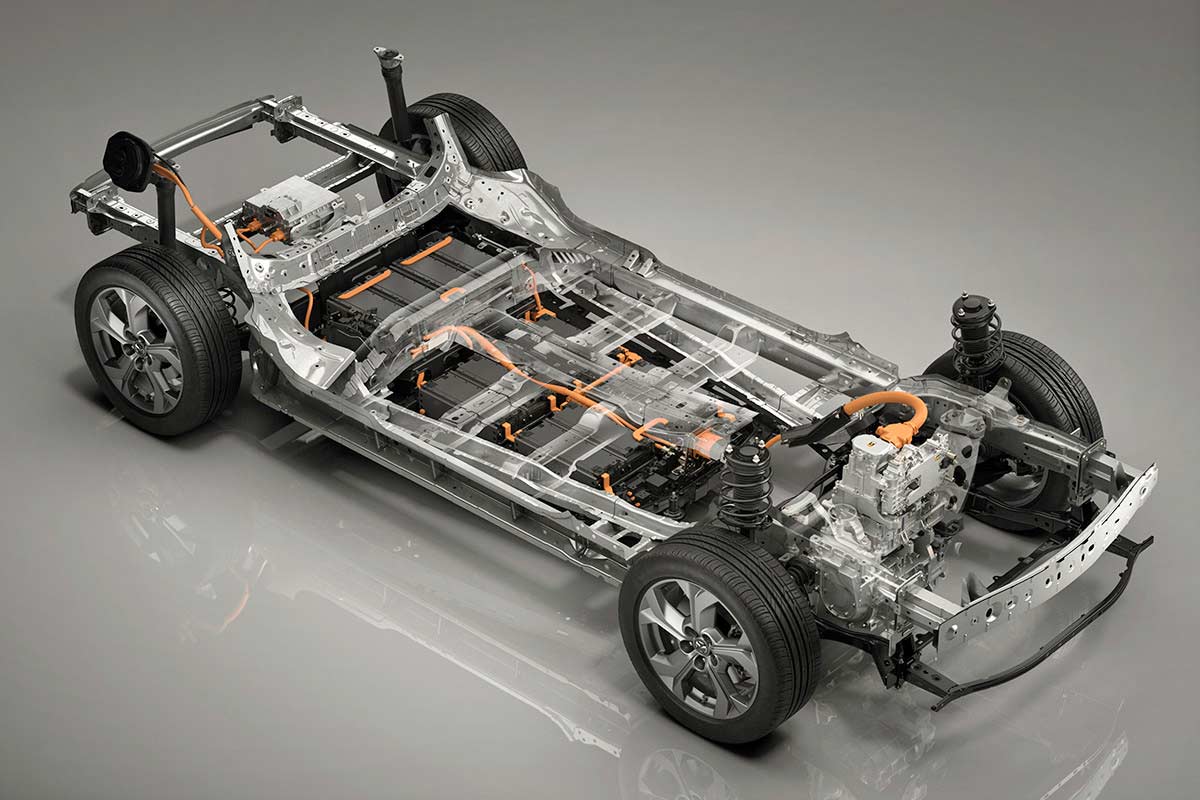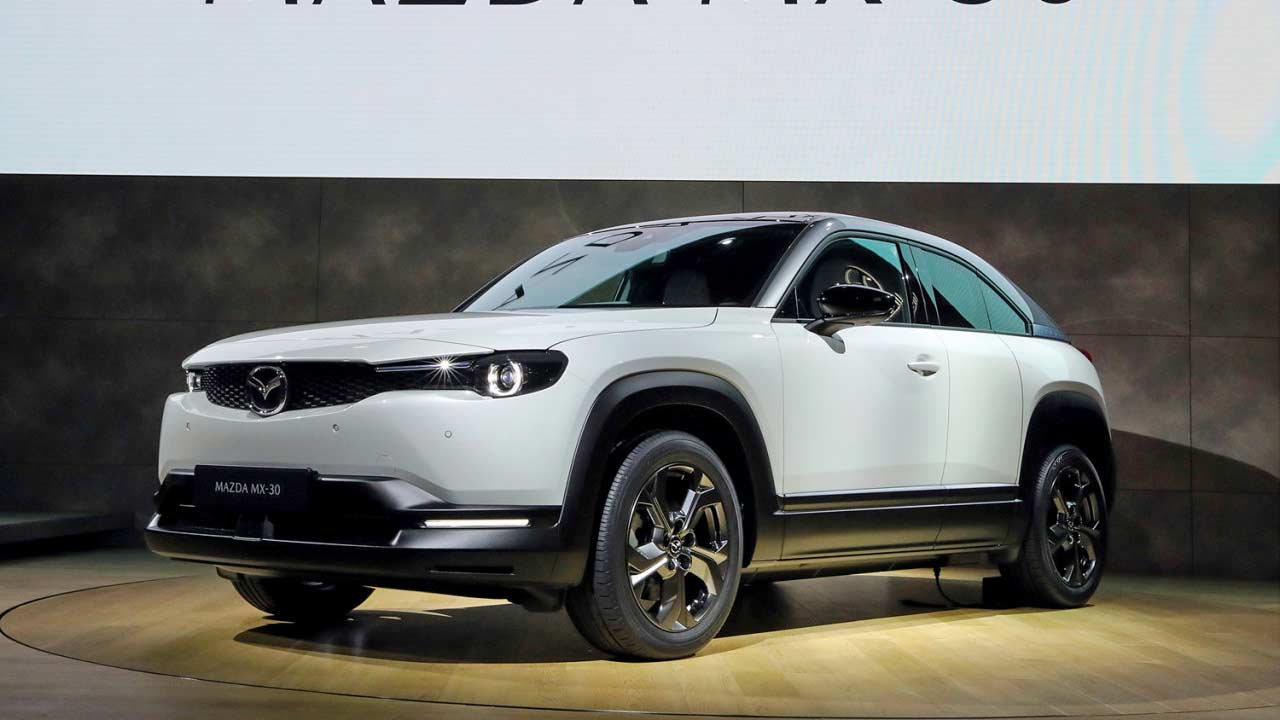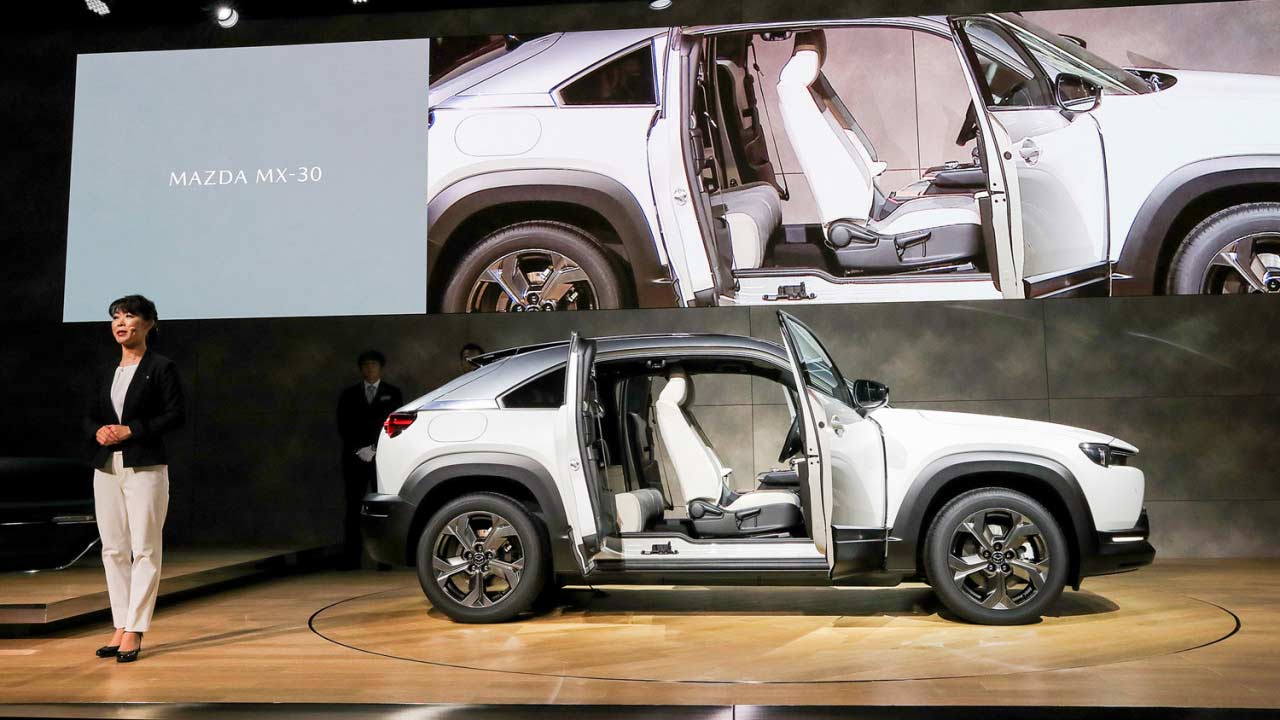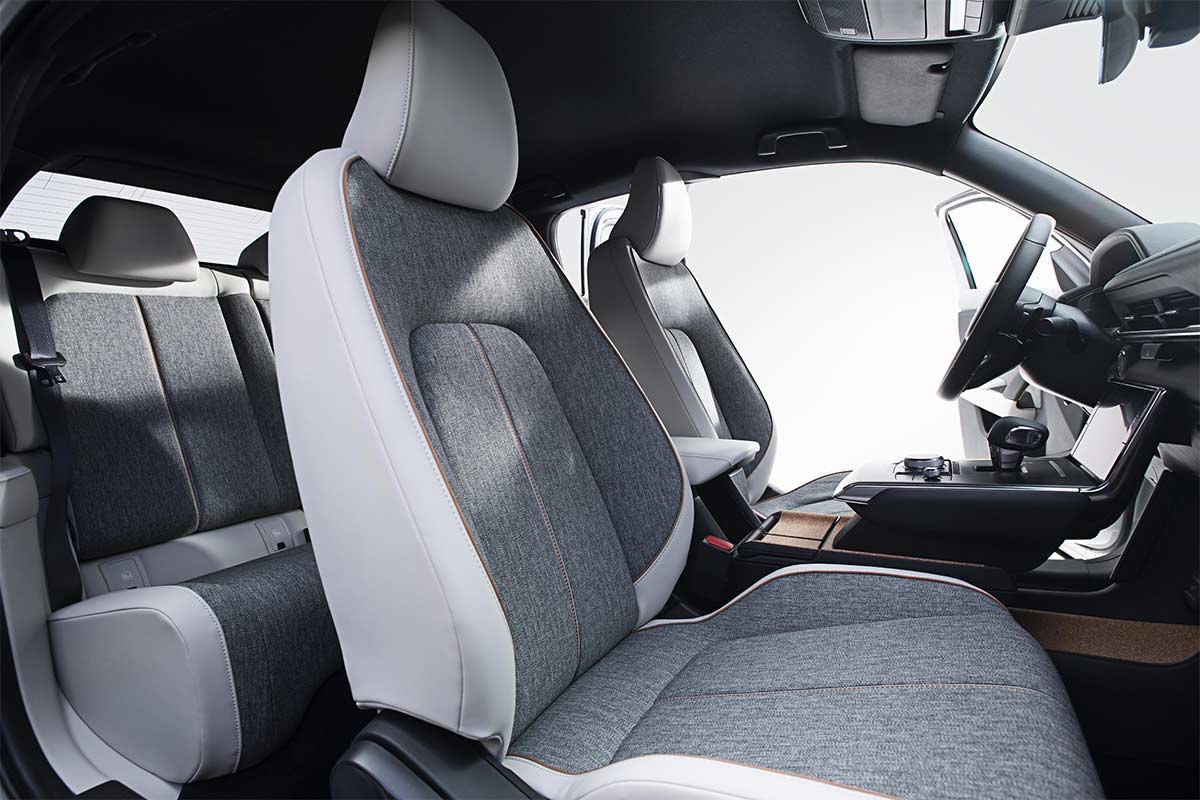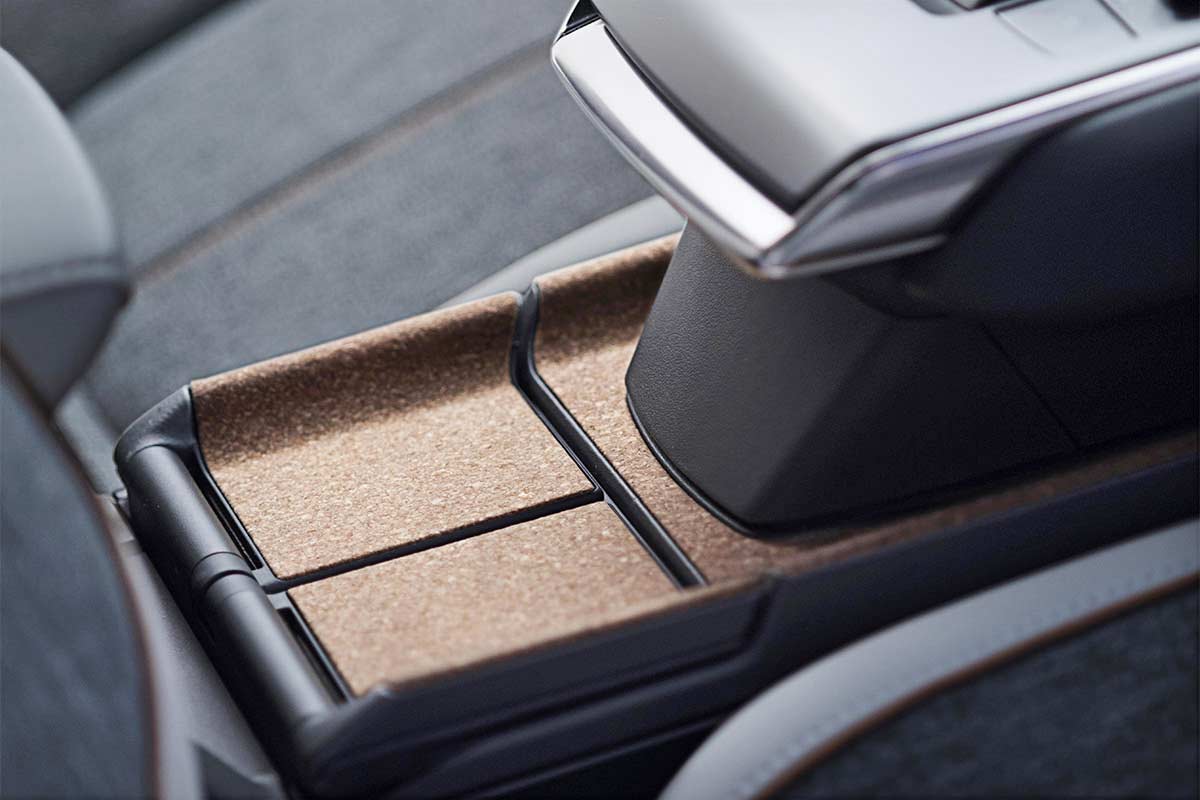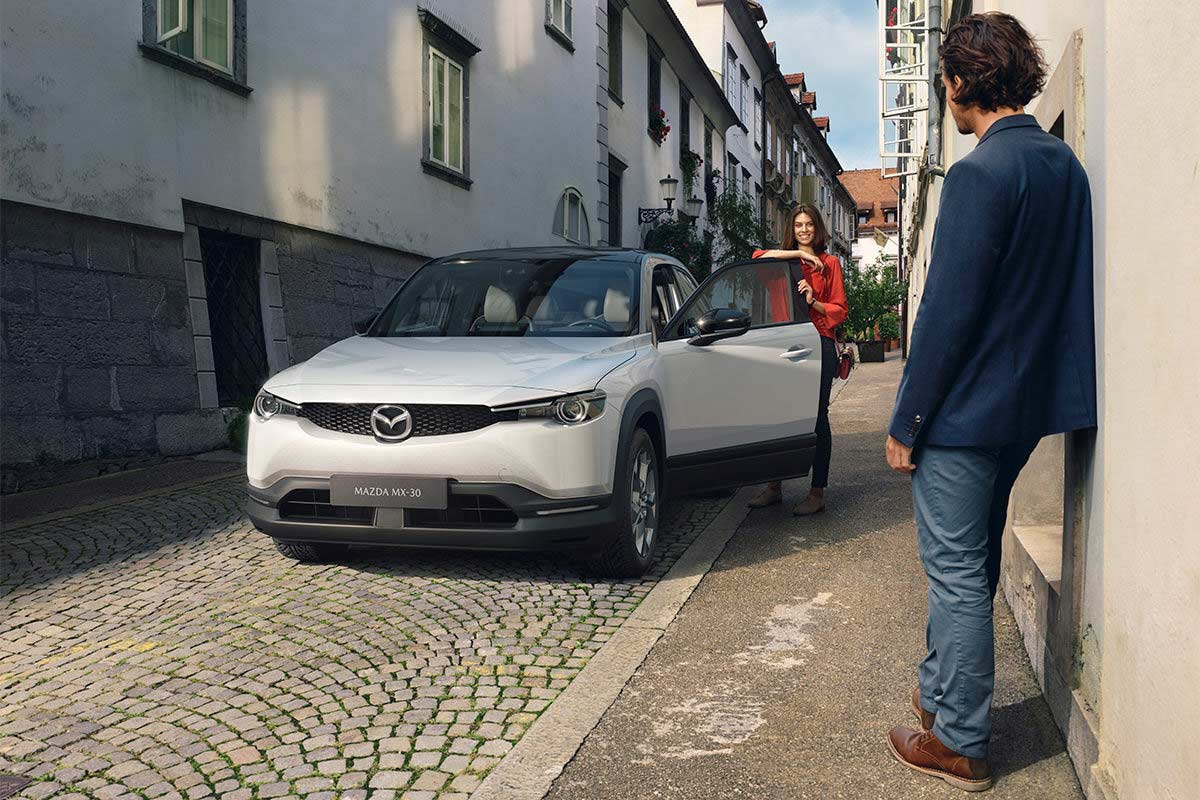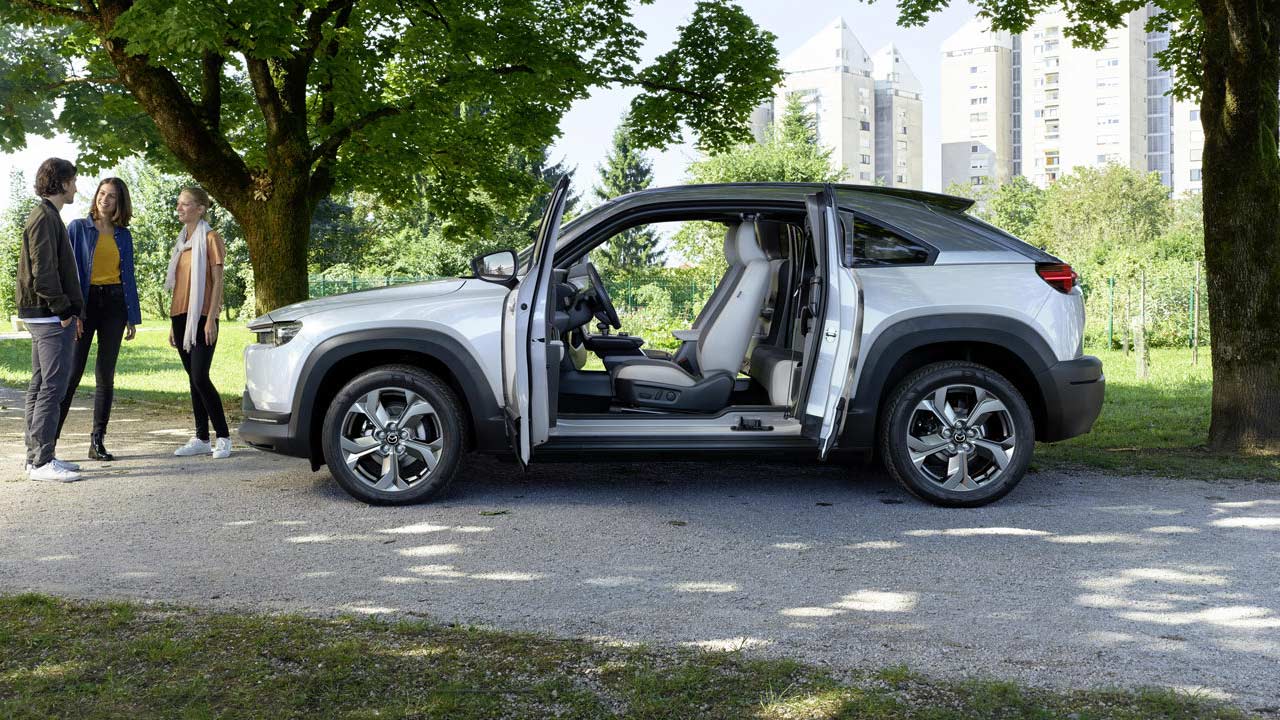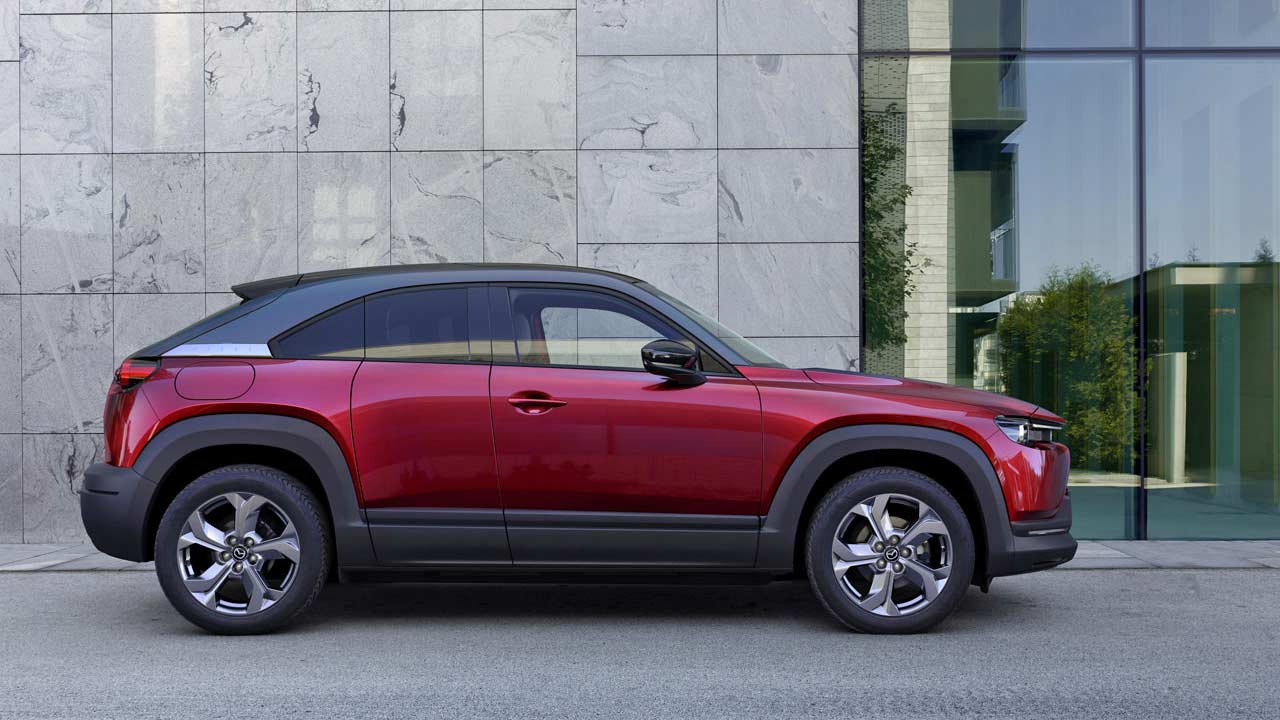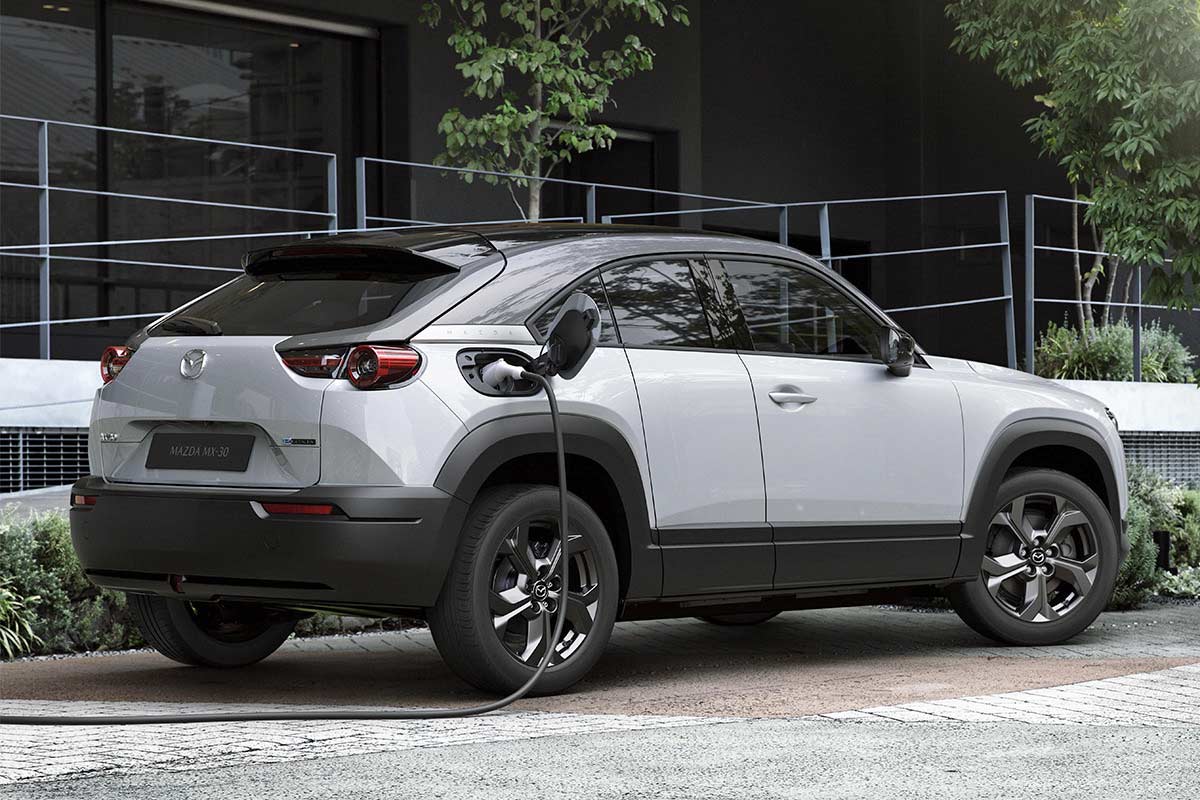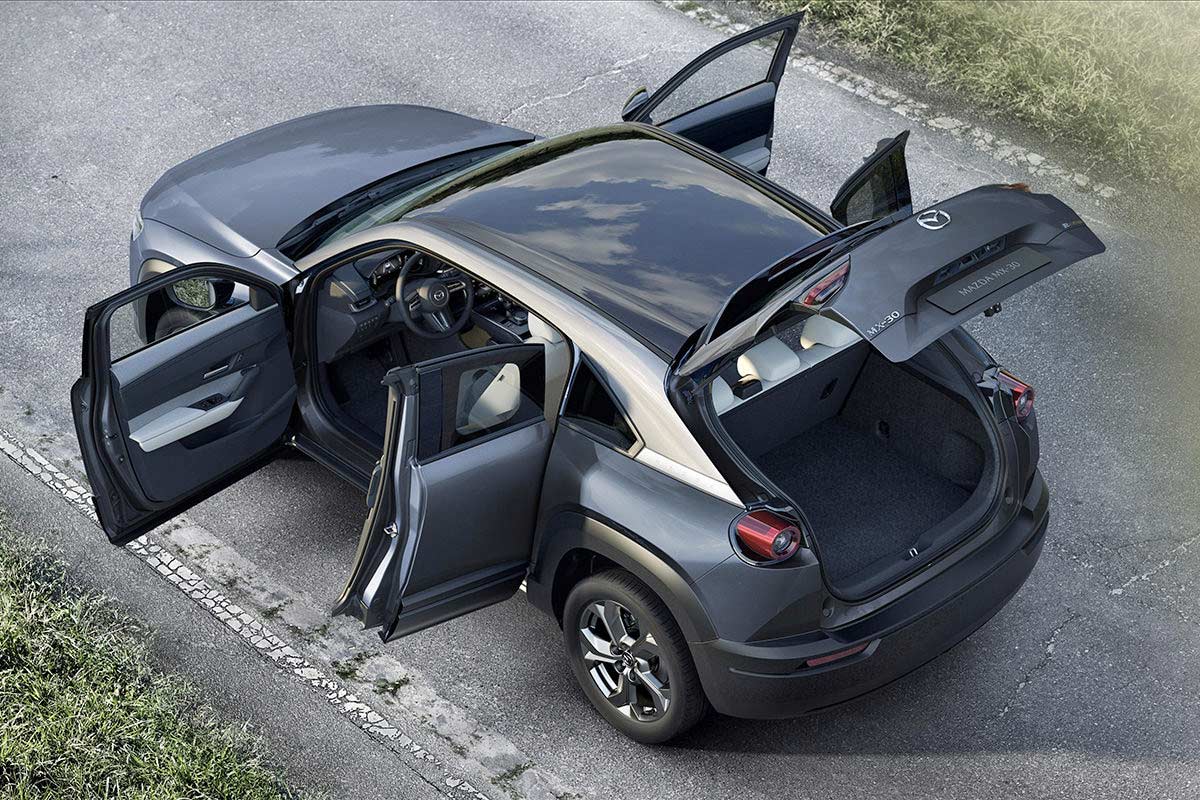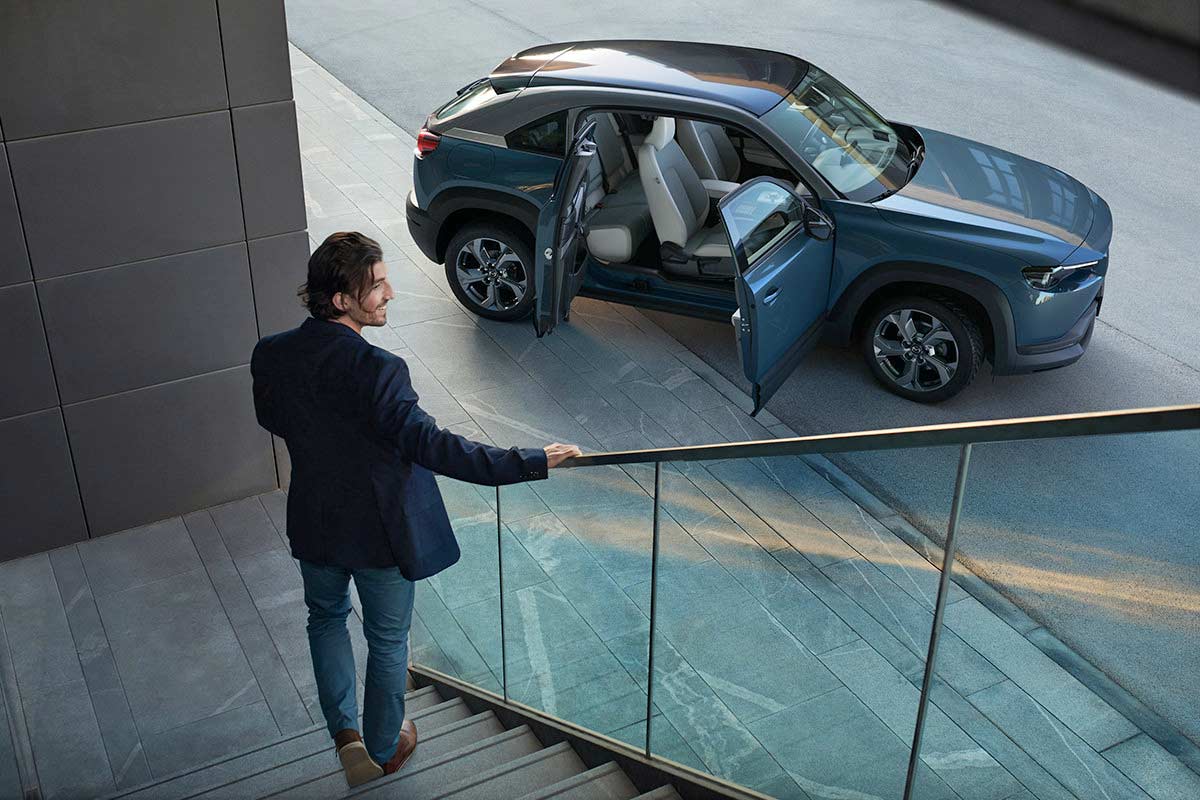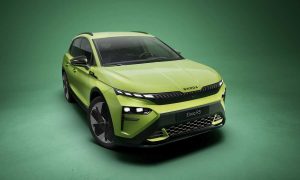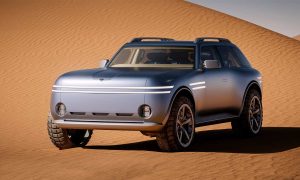Looks really good, isn’t it? As with all other Mazdas these days, the MX-30 adopts the brand’s Kodo-Soul of Motion design language, which is a simple yet elegant design theme with no unnecessary creases and lines.
The coupe-like sloping roofline doesn’t look very aggressive either and there’s an integrated gloss-black roof spoiler that adds a sporty touch. One of the design highlights is, of course, those rear-hinged doors or “freestyle doors” as Mazda calls them. In case you’re wondering, the doors were inspired by the RX-8.
As you might be able to figure out from the photos, the MX-30 is a compact crossover measuring 4,395 mm in length, 1,795 mm in width and 1,570 mm in height. Wheelbase measures 2,655 mm. It rides on 18-inch wheels shod with 215/55 tyres.
As with many EVs that we’ve seen recently, the interiors are mostly about sustainability. The door trim uses fibers made from recycled plastic bottles, and the centre console uses Heritage Cork that is harvested from the bark of oak trees without chopping them down.
Technical details and full information on the features are not available at the moment, but we can notice an infotainment system on the dashboard, while the air conditioning controls are in another 7-inch touchscreen under the central air vents. Two 2.5A USB ports and a 12V DC power socket are part of the standard equipment, while a 150W AC outlet is also included depending on the market. Safety technologies include Smart Brake Support (SBS), which is about damage-mitigation braking and collision prevention at intersections, and another technology that prevents deviating from the driving lane through monitoring the curb in addition to lane markings.
The Mazda MX-30 doesn’t go crazy with the specifications either. For European markets, it gets a 35.5 kWh lithium-ion battery pack with prismatic cells, which is claimed to deliver a range of up to 200 km (124 miles). As for charging times, up to 80% charge can be achieved within 30-40 minutes via 50 kW DC charging. With an AC wall box (22 kW), the MX-30 is claimed to get fully recharged within 4.5 hours.
In the MX-30, Mazda’s G-Vectoring Control (GVC), which uses the powertrain to improve chassis performance, has evolved into e-GVC Plus, which leverages the torque characteristics of the electric motor to optimize the front-rear load shift under an even wider range of usage scenarios. The e-GVC Plus provides fine control over motor torque in response to the driver’s steering wheel operations. When the driver turns the steering wheel to enter a corner, the system reduces the torque slightly to instigate load transfer to the front and assumes a smooth turning posture. When the driver starts to return the steering wheel to its original (neutral) position as the car begins to exit the corner, the torque is increased slightly to shift the load to the rear and stabilize the vehicle behavior.
In the UK, Mazda plans to open the order books from Spring 2020. While we wait for more information, why not check out the video above?
Update: Mazda MX-30 EV U.S. prices start at $33,470

Leave a Reply
Note: Comments that are unrelated to the post above get automatically filtered into the trash bin.
